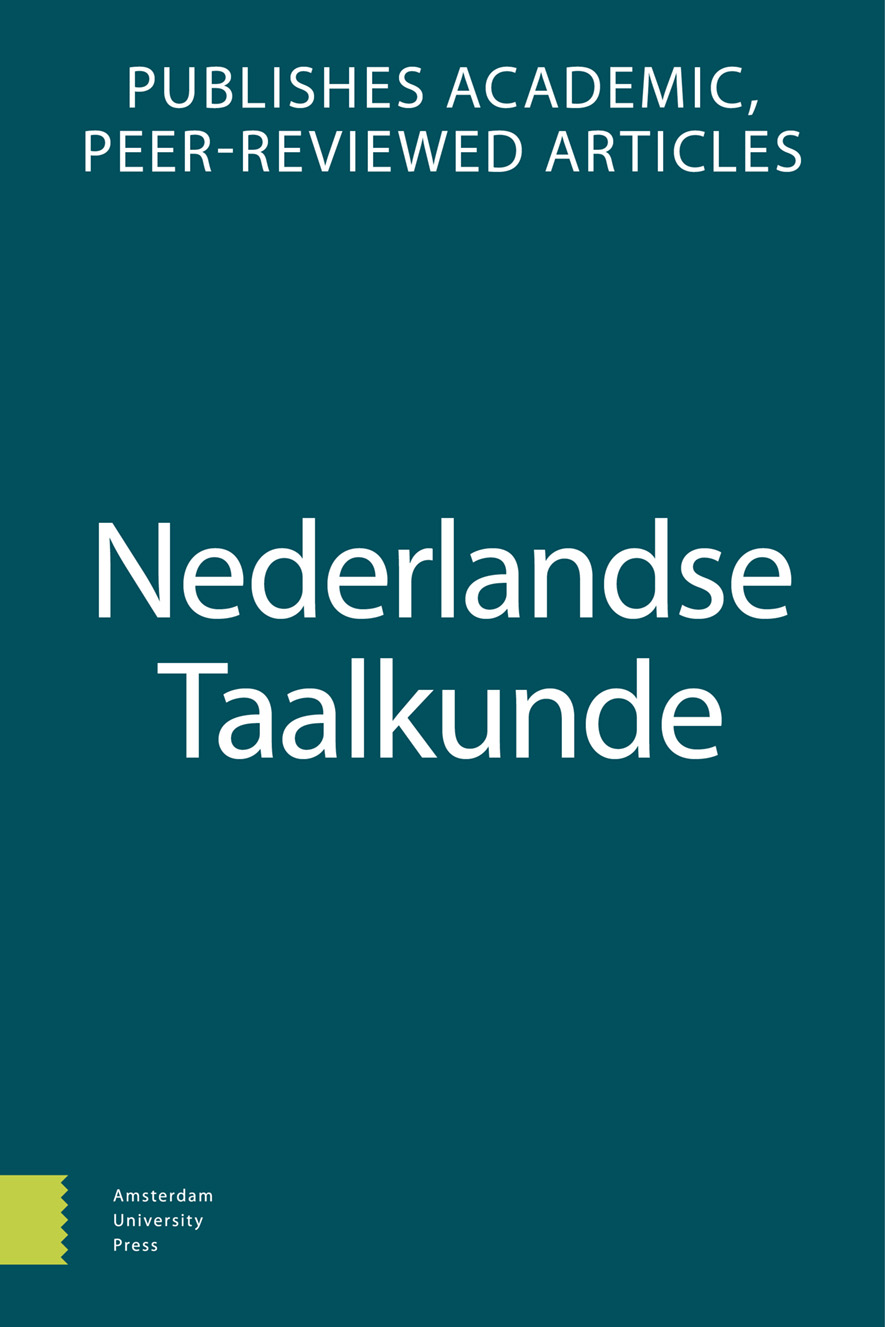- Home
- A-Z Publications
- Nederlandse Taalkunde
- Previous Issues
- Volume 22, Issue 1, 2017
Nederlandse Taalkunde - Volume 22, Issue 1, 2017
Volume 22, Issue 1, 2017
Language:
English
-
-
oa Prosody and sentence type in Dutch1
More LessAbstract This article summarizes earlier research done on the prosodic marking of interrogativity and imperatives in Dutch on the basis of recorded speech from male and female speakers. The first part of this article compares statements (ST) and three types of question. The form of questions may differ in various respects from statements: Wh-questions (WH) have a question word in initial position and exhibit subject-verb inver Read More
-
-
-
oa Prosody as an argument for a layered left periphery
More LessAbstract Van Heuven and Haan’s (2000, 2002) experimental work on the prosody of Dutch question types found that the prosodic signalling of interrogativity is stronger for declarative questions, less so for yes/no-questions and even less so for wh-questions. This paper shows how the sequence established on prosodic grounds (declarative questions > yes/no questions > wh questions > statements) is mirrored in the fu Read More
-
-
-
oa Understanding grammar at the community level requires a diachronic perspective
More LessAbstract Structuralism and formal grammar have, in the course of the 20th century, rightfully taken issue with more vague and unfalsifiable just-so stories of some of their predecessors. For all its merits, though, the structuralist-formal strand of linguistics has its drawbacks as well. The classical Saussurean distinction between synchrony and diachrony can be harmful: a purely synchronic description is often inferior to the insight Read More
-
-
-
oa Synchrony/diachrony, frequency and analogy
More LessAbstract The synchrony/diachrony issue must be sidestepped, since the ultimate question to be studied is: which psycholinguistic limitations does the human brain impose on its representation of language. These limitations involve frequency and analogy, which are the cause of ill-understood chaos-theoretic patterns of order. In particular, analogy must be formalised, and its interaction with frequency must be further investigated.
-
-
-
oa Wat kunnen we leren van verwerving? Dat constructiegrammatica en generatieve taalkunde beide nodig zijn
More LessBy Fred WeermanAbstract Recent developments in research into acquisition show how ideas of construction grammar and generative grammar complement each other. This is illustrated with an overview of work on the acquisition of verb second, showing amongst others intriguing differences between early and late acquisition. It is argued that there are no a priori (‘innate’) features or categories but that these are derived based on the avail Read More
-
-
-
oa De beschrijving van kale predicaatsnomina
More LessBy Ina SchermerAbstract The description of bare predicate nouns: a plea for Construction Grammar Bare nominals in predicate position like artiest in Jan is artiest ‘lit. Jan is artist’ have a capacity meaning, the capacity in this case being a profession. These nominals differ from non-bare nominals (with the indefinite article een) like een artiest in Jan is een artiest ‘Jan is an artist’, which can receive two interpretations: a capacity interpretatio Read More
-
-
-
oa Sentence-medial if-clauses in Dutch
More LessAbstract Sentence-medial if-clauses deviate from regular clause-order patterns by their insertion into the main clause, rather than preceding or following it. This phenomenon is analysed in Dutch in terms of semantic domain and syntactic integration.
-
Most Read This Month
Article
content/journals/13845845
Journal
10
5
false
en

Most Cited Most Cited RSS feed
-
-
oa Goed of fout
Authors: Hans Bennis & Frans Hinskens
-
- More Less

